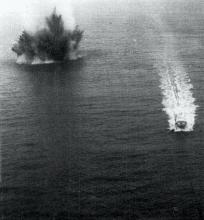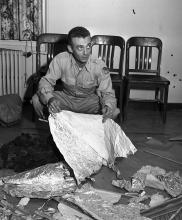Listen to today's episode of StarDate on the web the same day it airs in high-quality streaming audio without any extra ads or announcements. Choose a $8 one-month pass, or listen every day for a year for just $30.
You are here
Langley Research Center
When NASA set out to send people into space, it handed the job to its oldest facility. Langley Research Center had been operating on the banks of Chesapeake Bay for four decades. To handle the new task, its engineers formed the Space Task Group. The group oversaw the design and construction of the Mercury spacecraft, and selected and trained the original astronauts — the center’s first big step into space exploration.
Langley is commemorating its hundredth anniversary this week. Construction began on its first facility in July of 1917. It wasn’t part of NASA at the time, though — NASA didn’t even exist. Instead, it was part of the N-A-C-A — the National Advisory Committee on Aeronautics.
Langley was the first civilian aviation research center in the country. It built a series of wind tunnels for testing airplanes and their systems. That work helped improve aircraft performance and safety.
When NASA was formed, in 1958, it inherited the NACA facilities. Langley continued its aviation work, but also branched out into space.
Its engineers developed the concept that Apollo used for getting the Moon. They managed a set of robotic orbiters that mapped the lunar surface, and built simulators to help astronauts maneuver in space and land on the Moon. Langley also managed the successful Viking missions to Mars.
Langley continues its work today, with projects involving aviation, space, and other fields — a century after its birth.
Script by Damond Benningfield





